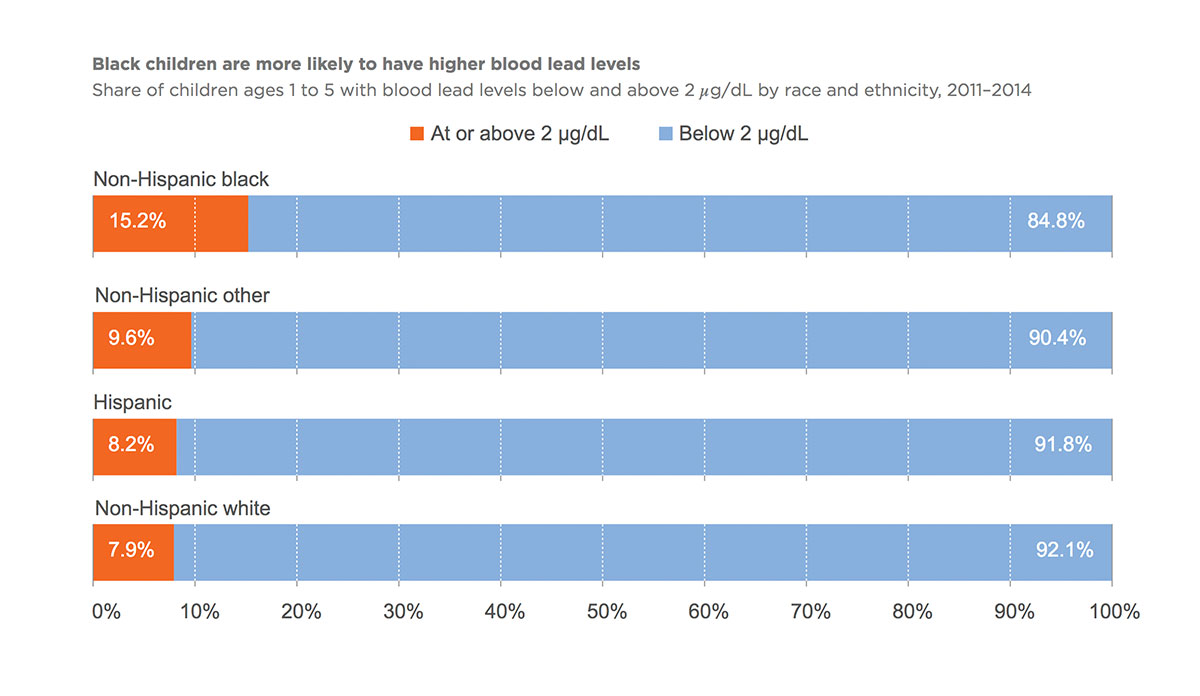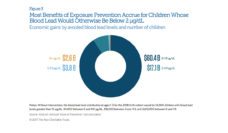The Flint, Michigan water crisis made headlines for months, but it is not the only city in the United States with lead-contaminated water. A USA Today Network investigation found nearly 2,000 water systems across the country have excessive lead levels. Children of color are particularly vulnerable to lead exposure from the water they drink, especially in places where they spend a lot of time: their homes, schools, day care centers, and playgrounds.
In a report released by Child Trends, Vanessa Sacks and Susan Balding call attention to lead poisoning among children of color, especially non-Hispanic Black children. As shown in the graph, almost twice as many non-Hispanic Black children have lead levels at or above 2 micrograms per deciliter compared to non-Hispanic White children.
High blood levels of lead in children can be fatal, but low blood levels can be harmful as well. Low levels can affect cognitive development and are associated with reduced IQ, reduced attention span, and an increase in antisocial conduct. Guidelines from the Centers for Disease Control and Prevention are unequivocal. No amount of lead in the blood is considered safe for children.
An estimated 15 to 22 million people drink and bathe in water that runs through lead pipes.
Children may also be exposed to lead through paint. According to the American Healthy Homes Survey, 52% of homes built before 1978 contain lead-based paint. Data from this survey also indicate that the older the home, the more likely it is to contain lead-based paint. The U.S. Department of Housing and Urban Development estimates that 3.6 million homes with young children living in them have lead paint. And many communities are exposed to high levels of lead in the air and soil.
So, what are some possible solutions for reducing lead exposure? When it comes to lead-contaminated water, removing lead pipes is the key. Removing or covering lead paint using safe techniques will help as well.
Databyte via Vanessa Sack and Susan Balding, The United States Can and Should Eliminate Childhood Lead Exposure. Child Trends.













